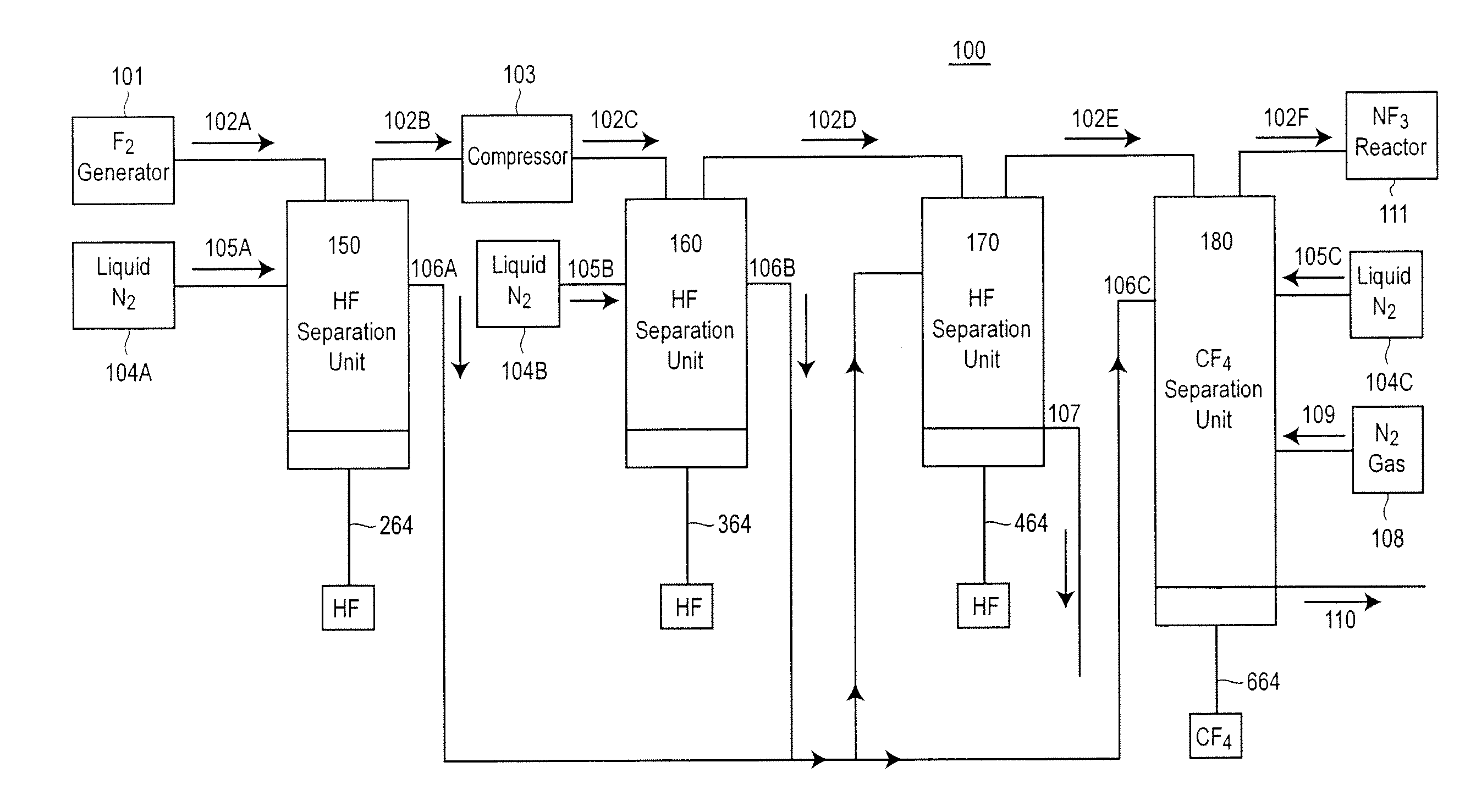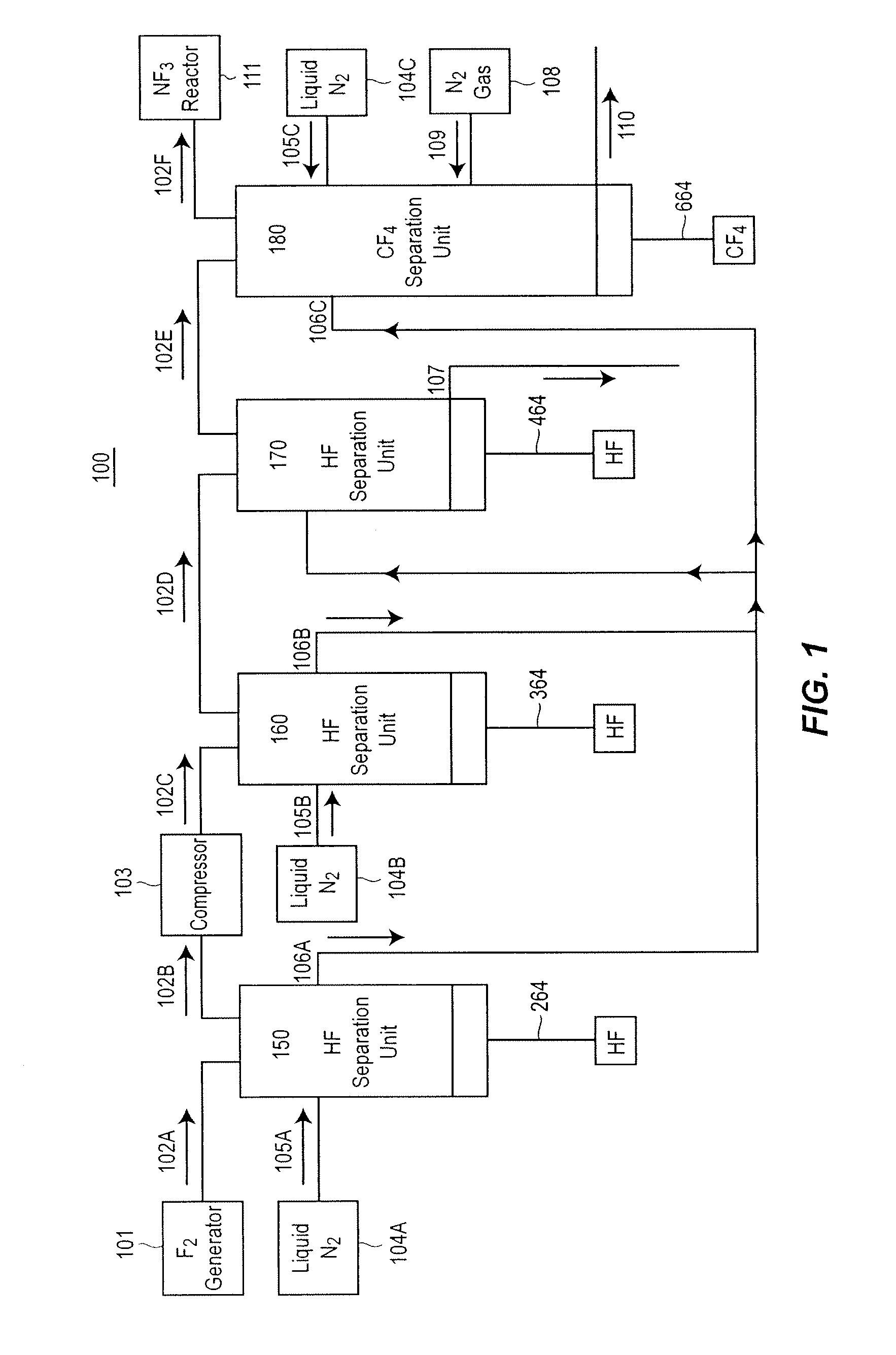Fluorine purification
a technology of fluorine and purification gas, which is applied in the field of purification gas, can solve the problems of high consumption of inert gas, increase the risk of contamination of manufactured products, and low efficiency, and achieve the effects of reducing time, cost, and waste of products
- Summary
- Abstract
- Description
- Claims
- Application Information
AI Technical Summary
Benefits of technology
Problems solved by technology
Method used
Image
Examples
example
[0078]The following example further illustrates the methods and apparati of the present invention. Those skilled in the art will recognize that modification to the apparati and methods are available and may be different from those represented in the example.
[0079]A Fluorine Purification Apparatus 900 similar to that shown in FIG. 9 was constructed and tested. In the direction of F2 flow from the F2 Generator 901 the apparatus in FIG. 9 has a Low Pressure HF Separation Unit 950, a F2 Compressor 903, a High Pressure HF Separation Unit 960, a plurality or Low Temperature HF Separation Units 970 and a CF4 Separation Unit 980. Reference to the operation of these individual units, the mode and operation of the coolants within these units, and other specifics can be found above in the description of the similarly labeled units and in FIGS. 2-8.
[0080]In this example, the liquid coolants in the Low Pressure HF Separation Unit 950 and the High Pressure HF Separation Unit 960 were CHF3, which ...
PUM
 Login to View More
Login to View More Abstract
Description
Claims
Application Information
 Login to View More
Login to View More - R&D
- Intellectual Property
- Life Sciences
- Materials
- Tech Scout
- Unparalleled Data Quality
- Higher Quality Content
- 60% Fewer Hallucinations
Browse by: Latest US Patents, China's latest patents, Technical Efficacy Thesaurus, Application Domain, Technology Topic, Popular Technical Reports.
© 2025 PatSnap. All rights reserved.Legal|Privacy policy|Modern Slavery Act Transparency Statement|Sitemap|About US| Contact US: help@patsnap.com



